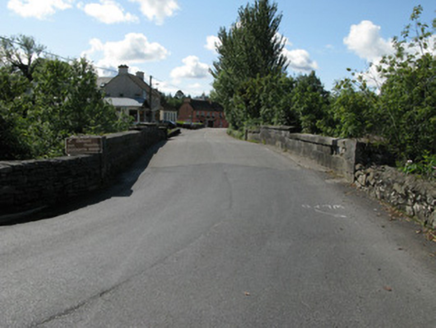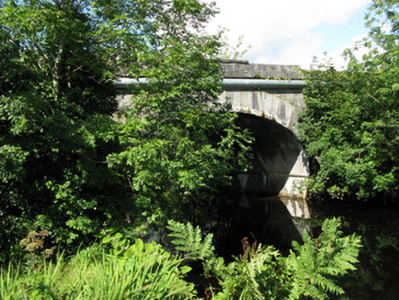Survey Data
Reg No
30402601
Rating
Regional
Categories of Special Interest
Architectural, Historical, Social, Technical
Original Use
Bridge
In Use As
Bridge
Date
1822 - 1830
Coordinates
103954, 252609
Date Recorded
04/09/2008
Date Updated
--/--/--
Description
Single-arch bridge over river, c.1825. Damaged, 1921. Repointed tooled limestone ashlar walls between tooled limestone ashlar tapered piers with cut-limestone stringcourses below stepped parapets having cast-concrete rounded coping. Single elliptical arch with rusticated ashlar voussoirs. Sited spanning Abhainn Chorr na Móna [Cornamona River] with overgrown banks to river.
Appraisal
A bridge attributed to Alexander Nimmo (1783-1832), Engineer to the Western District (appointed 1822; Ashworth 1851, 72-3), representing an important component of the early nineteenth-century civil engineering heritage of Contae Gaillimh [County Galway] with the architectural value of the composition confirmed not only by the construction in a blue-grey limestone with silver-grey dressings producing a mild two-tone palette, but also by the elegant "sweep" of the arch making a pleasing visual statement at a crossing over Abhainn Chorr na Móna [Cornamona River]. NOTE: Staff Captain John C. King describes the blowing up of Cornamona Bridge (21st May 1921) in his Witness Statement to the Bureau of Military History [BMH.WS1731]: "We went to Cornamona to destroy [the] bridge… The charge was laid in the bridge by Eamonn Ó Maile, and an electric cable led to a battery, some distance away. Some of the men stood guard while others went to houses close by to warn the occupants to evacuate until after the detonation. It was a heavy charge of dynamite, as the bridge was very strongly constructed of granite arch [sic]… The explosion shook the countryside and split the bridge in two. There was an old man named Lowery who would not get out of his house, as he was suffering from severe rheumatism. He was lifted from his bed by the concussion [sic], and when he got to his feet, his old bones had become limber as a child's. I heard that he became an ardent Republican".



